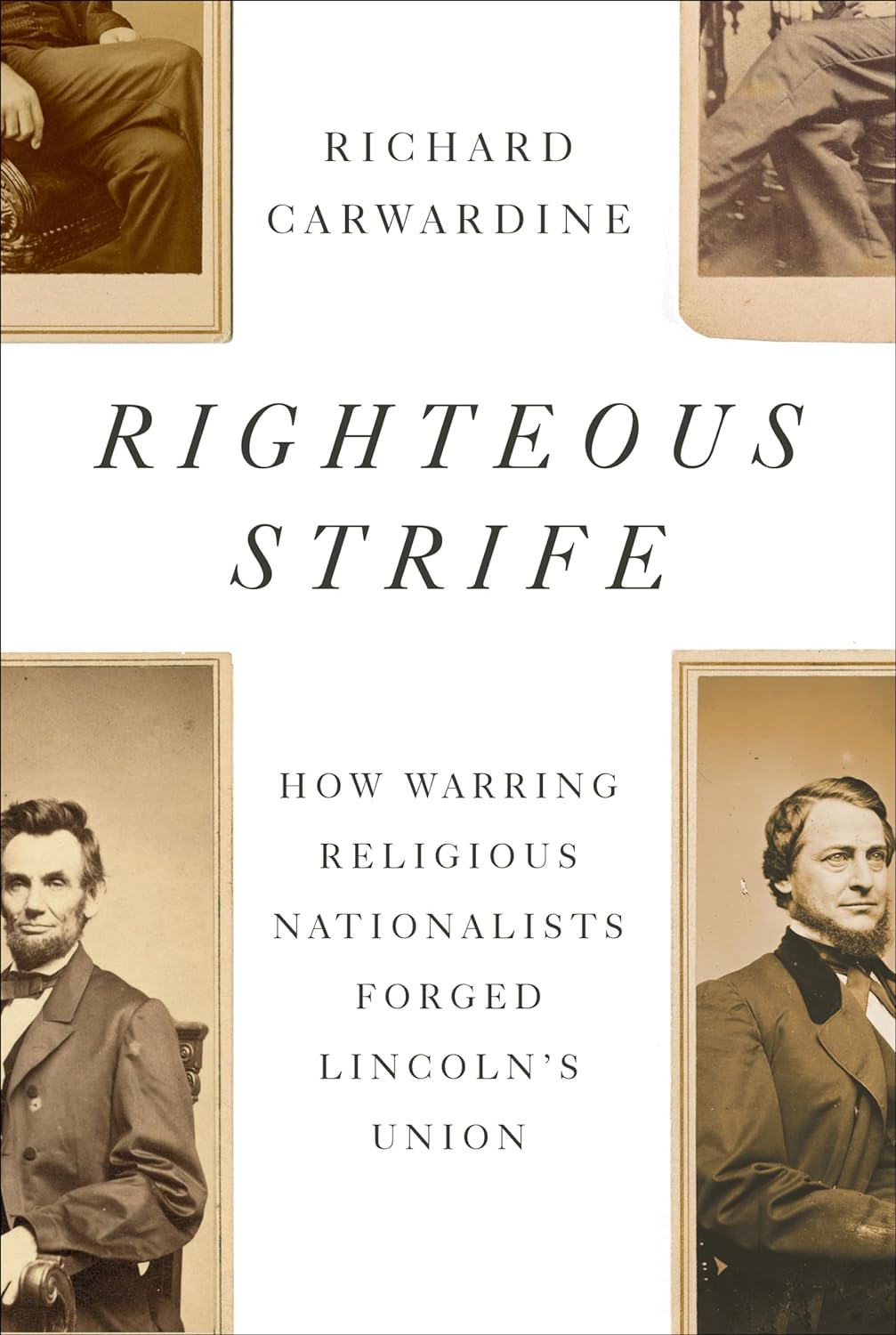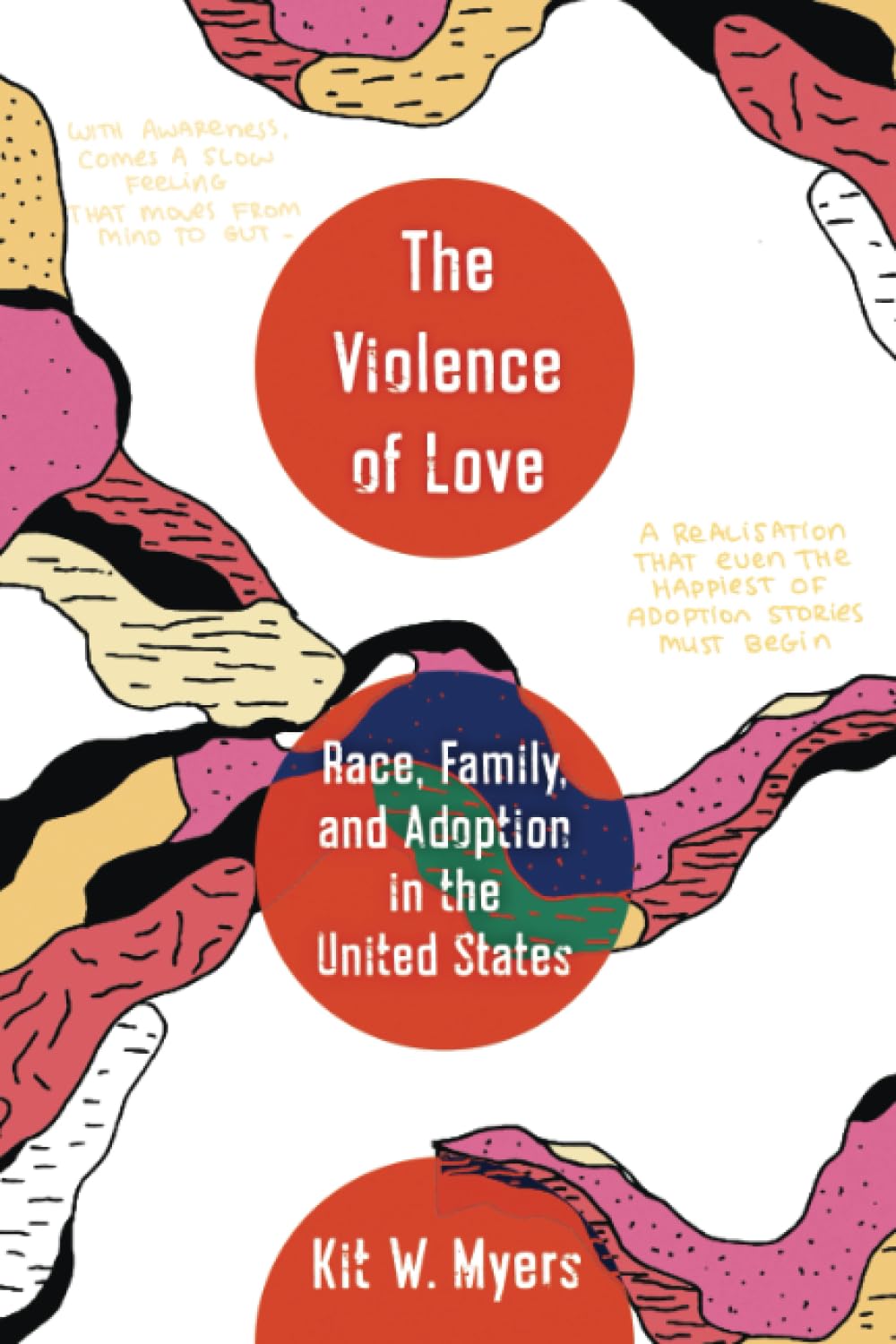Righteous Strife: How Warring Religious Nationalists Forged Lincoln’s Union
- By Richard Carwardine
- Knopf
- 624 pp.
- Reviewed by Tom Peebles
- January 29, 2025
Was Abe’s spiritual transformation an honest one?

The interplay between politics and religion illuminates many phases of American history, not least the Civil War 164 years ago. That interplay during our country’s gravest internal crisis is the subject of Richard Carwardine’s Righteous Strife: How Warring Religious Nationalists Forged Lincoln’s Union.
The Welsh-born Carwardine, who recently served as president of Corpus Christi College, Oxford, is one of Britain’s leading experts on the American Civil War. His primary purpose in this prodigiously researched volume is to explore the religious evolution of President Abraham Lincoln during the war and how that growth impacted his views and actions on slavery. The author thus adds to the proliferation of works on Lincoln and the Civil War written from seemingly every conceivable angle, with the interaction of religion and politics during the crisis receiving substantial scholarly attention only recently.
Carving out his space in this crowded field, Carwardine nimbly pairs Lincoln’s religious evolution with a schism that divided what he terms “religious nationalists,” primarily Protestants from the North and Midwest who, although united in their opposition to the attempted secession from the Union of 11 Southern states, divided bitterly over the future of slavery. As Carwardine’s subtitle suggests, “anti-slavery nationalists” and “conservative nationalists” were at war with one another in the nation’s pulpits and newspapers while the federal government waged war on the battlefield.
Eradication of slavery was the priority for anti-slavery nationalists, with preservation of the Union their preferred means to that end. For conservative religious nationalists, however, preserving the Union was itself the priority, and they were ready to compromise with the slaveholder states to achieve that end. This schism constituted a “binary divide,” Carwardine writes, contributing to deep polarization everywhere. Each side was “certain of its own righteousness” while accusing the other of “debasing Holy Writ.” Occasionally, the author takes his readers to the rebellious states, showing how religion was used to support their withdrawal from the Union and their ardent defense of slavery. But this is a detour from his primary thesis.
On the eve of the Civil War in 1860, the United States enjoyed unmatched religious diversity, even though about 75 percent of the population was Protestant. Catholics, Jews, Mormons, Unitarians, and Quakers, among others, co-existed with mainstream Protestants, especially Methodists, Baptists, and Presbyterians. Carwardine ranges widely and deeply in exploring this rich assortment in the decades leading up to the war. In the book’s early portions, America’s religious landscape and its growing schism among religious nationalists are the dominant threads, with Lincoln and his evolving theological perspective secondary. But from the time he won the presidency in November 1860, Lincoln takes over the narrative.
As a rising political star and presidential candidate in the newly formed Republican Party, Lincoln appeared to entertain a broad and bland view of God as the creative presence behind the universe but not an entity actively involved in human affairs — a perspective at odds with most religious nationalists on both sides. As wartime president, however, his theological perspective took what Carwardine terms a “providentialist turn,” in which he acknowledged a “God who intervened in the life of the nation for his own mysterious purposes.” This shift brought Lincoln ever closer to the “historic Calvinism that colored much of Northern Protestantism,” and thus into broad theological alignment with both anti-slavery and conservative religious nationalists.
But Lincoln’s spiritual metamorphosis was intertwined with his evolution regarding the slavery question. The pre-presidential Lincoln had advocated for the containment of slavery in locations where it already existed. Yet as war president, his anti-slavery convictions deepened. A “more capacious moral framework,” Carwardine argues, led Lincoln to “embrace emancipation…and equality of civic opportunity for both black and white.” As the war progressed, Lincoln’s thinking on these intertwined issues came to align with anti-slavery religious nationalists, although for a remarkably long period, he was able maintain the support of both sides.
Lincoln did not lose substantial support among conservative religious nationalists until, fortified by a series of battlefield successes, he issued the Emancipation Proclamation on New Year’s Day 1863, the “most important presidential edict since the foundation of the republic” in Carwardine’s words. The decree freed all enslaved persons within the 11 seceding states (and was thus inapplicable to the border states, which maintained slavery yet remained loyal to the Union). The author shows the innately cautious Lincoln moving incrementally toward this monumental declaration, while introducing with “arresting and unprecedented regularity the notion of his own and the nation’s dependence on God as the moral governor of the world.”
The proclamation’s last sentence invoked the “gracious favor of Almighty God” upon an “act of justice, warranted by the Constitution.” Anti-slavery nationalists viewed the edict “above all as an act of righteousness,” founded upon the principles of “eternal rectitude, justice and virtue as laid down in the Scriptures of Divine truth.” Many saw it as satisfying the prophet Isaiah’s instruction to liberate the captives. A Chicago Tribune editor lauded its “recognition of the finger of God in the affairs of nations.” But the Emancipation Proclamation also proved to be the moment when Lincoln lost the conservative nationalists.
Those nationalists largely voted against him in his successful re-election campaign of 1864; the conciliatory language adopted in his Second Inaugural Address in March 1865, ending with the famous words “[w]ith malice for none, with charity for all,” could be seen as an attempt to regain their support. The speech took place in the month preceding the surrender of Confederate forces and the president’s assassination. Lincoln had noted that both parties to the conflict “read the same Bible, and pray to the same God; and each invokes His aid against the other.” But the prayers of both “could not be answered; that of neither has been answered fully. The Almighty has His own purposes.”
Lincoln referred to God 14 times in the address, quoted or paraphrased four passages of scripture, including the Book of Genesis and Jesus’ Sermon on the Mount, and talked about prayer at three separate points. In Carwardine’s view, the address represented the culmination of Lincoln’s wartime journey vis-à-vis the mysterious purposes of an almighty God and his judgment on the American nation. But its conciliatory tone did little to win the hearts of conservative religious nationalists. Critics derided the infusion of religion into the address as “vindictive theology” and “fanatical cant.”
Did they have a point? Were Lincoln’s parallel evolutions on religion and slavery the result of deep conviction or — as his often-vituperative opponents insisted — opportunistic political calculations? Given the inconclusive historical record, Carwardine is too cautious to hazard an answer. Unarguably, Lincoln was acutely attuned to the political realities he faced. Yet his providential turn appears genuine here, as both the product of deep spiritual reflection and his numerous engagements with religious nationalists on both sides.
Carwardine digs deep into original source material throughout this hefty volume, deftly incorporating obscure speeches, sermons, and newspaper commentaries. The religious rhetoric that infused the intense debates among preachers, parishioners, politicians, and public commentators is colorful and fascinating, and many of the author’s examples are likely to be appearing in print for the first time in a century. This marshaling of evidence may overwhelm some readers, but those willing to accompany Carwardine in his excavation of long-forgotten material will be rewarded with a portrait of an uncommonly introspective president who, more than any of his predecessors, opted to “use his authority to elevate religion in the public sphere.”
Tom Peebles is a retired U.S. Department of Justice attorney living in Paris.

